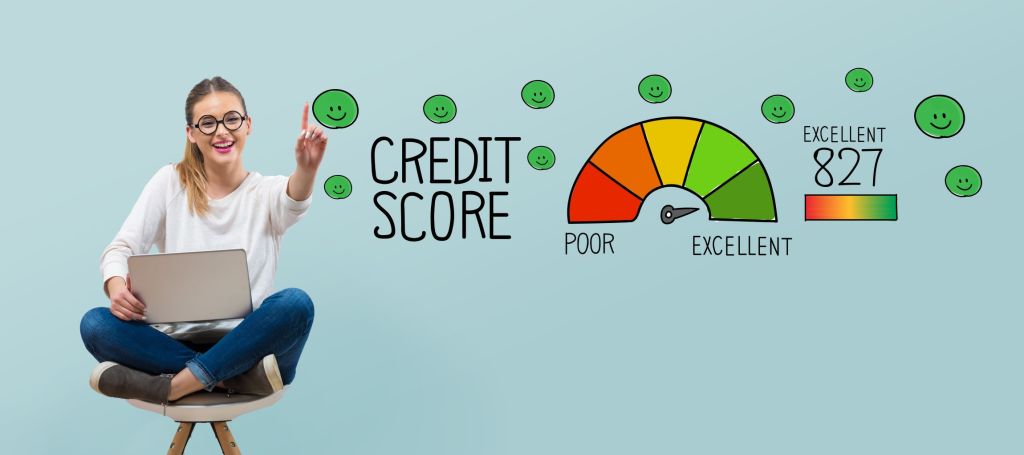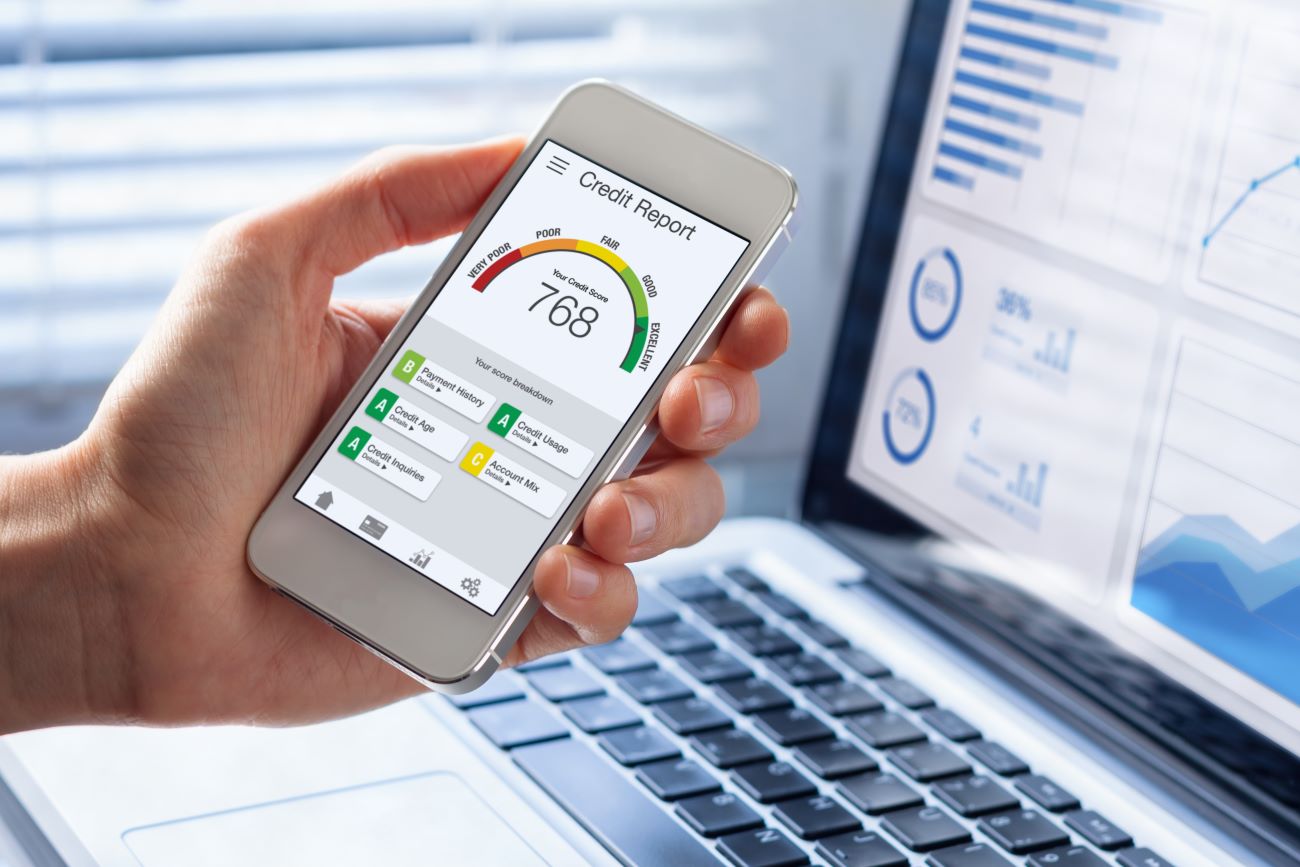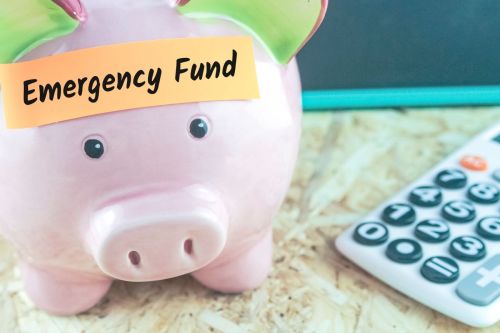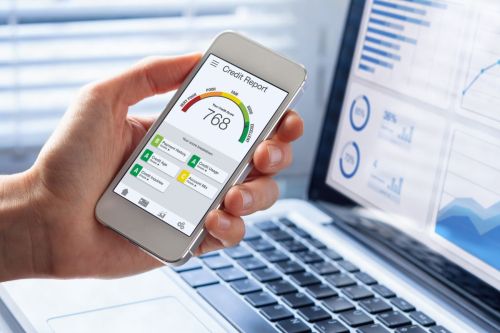Most parents know that a good credit score relies on successfully managing credit cards, mortgages, and other loans—but do your kids? If you ask them, they might say that the worst that can happen is extra interest on a missed payment for a phone bill, credit card, or student loan. But the reality is that multiple missed payments could affect their ability to qualify for future credit or hike the interest rates they may have to pay on future loans or credit cards.
Teach tweens and teens the importance of a good credit score now, while they’re still living at home and can build their credit with a financial safety net in place. By explaining terms like “credit score” and “credit rating” and how to check their credit report, you’ll help them become familiar with these concepts and understand the importance of paying bills on time. More importantly, they will understand how their actions affect their scores and (hopefully!) reap the benefits of a stellar rating later in life.
Here’s what teens need to know about credit reports.
Key takeaways
- A credit score evaluates a person’s credit risk, while a credit report provides a more comprehensive look at a person’s credit history and how creditworthy they are.
- Consumers with excellent credit generally have few or no late payments in their credit report and regularly pay off credit card balances in full, and the amount of credit they’re using is low.
- Canada’s two main national credit bureaus, Equifax Canada and TransUnion Canada, create credit scores and credit reports based on the information they receive about each borrower from their lenders.
- It’s important that your teen get in the habit of checking their credit report at least once a year and whenever they have a life change—a new apartment, a new loan, etc.
What is a credit report?
A credit report is a little different than a credit score (we’ll get to that below) in that it’s a summary of how someone has handled their credit accounts. This report includes the different types of credit they have and their payment history. Tell your teen to think of it like a teacher’s summary at the bottom of a report card—but instead of a summary of their schoolwork, this is a summary of their financial work.
A credit report looks at an individual’s entire credit history, not just their credit score, which assesses someone’s credit worthiness. Banks and lenders usually like to lend money to people who can show their creditworthiness. That’s a many-syllabled word, but it tells it like it is: Lenders like to lend money to people whom they believe will pay it all back—i.e., people who are worthy of the loan.
Banks and other lenders tend not to decide whether to extend credit based on their gut instinct or the way someone is dressed; they’ll look at a person’s credit report. This report is created when a customer borrows money or applies for credit for the first time. Lenders send information about the borrower’s accounts to Equifax and TransUnion, Canada’s two national credit bureaus. These companies collect, store, and share information about how an individual uses credit.
What is a credit score?
A credit score is a three-digit number that shows lenders the likelihood that someone will pay off their debts. Without a good credit score, it’s harder to borrow money. Equifax and TransUnion create credit scores and credit reports based on information they receive from lenders. Having a strong score means that your teen (when the time comes) should be able to get approval for a loan with a decent interest rate, while a low score could mean they’ll have difficulty qualifying for a loan. This doesn’t necessarily mean they won’t be able to get a loan at all, but it may mean they’ll pay a higher interest rate than someone with a better credit score. In essence, a person with a poor credit score is likely to end up paying more for a loan than a person with a good credit score.
The term “credit score” is sometimes used interchangeably with “credit rating,” although a credit rating is a different numbering and lettering system used by some lenders or credit-reporting agencies that shows the kind of credit someone is using (e.g., a car loan) and how good they are at making payments (e.g., on time, late, or never), which they send to credit bureaus.
A credit score, however, is what most lenders, businesses, and individuals use to decide whether to loan someone money, lease them a car, finance a smartphone, or approve a rental application, for example. Credit scores are considered a predictor of how someone will handle credit and bill payments. And the downside of having a poor credit score is real: Someone with a low score could be deemed unable to repay money owed on a loan or make rent every month, or they could even be found unfit for a job (some employers may ask to check your credit score as part of the hiring process). In those cases, the applicant could be denied—and if they’ve never thought twice about their credit score, they may not realize why they’ve missed out.
How is a credit score calculated?
Lenders weigh different factors as percentages to calculate a person’s credit score. Let’s break down a common example:
35 per cent is based on payment history
That is, how consistently someone has repaid credit cards and student loans, for instance. This can include any outstanding debt, whether they carry a balance on their credit cards, information on missed payments (how often it happens and on how many different credit accounts), and any collection details, too. Creditors like to see an established history of managing credit responsibly.
30 per cent is based on the amount of available credit that’s used
A credit score takes into consideration the amount of credit an individual is using on credit cards and other credit lines that they have available.
15 per cent is based on credit history
This credit score calculation looks at how long someone has had credit accounts. A credit history is built up over time, so the sooner your teen can start building one, the better.
10 per cent is based on inquiries
Here’s something your eager-to-get-a-credit-card teen might not think about when they are applying to many different companies. If they’re trying to get a loan or credit card, these inquiries may impact their score, as they could indicate that they’re having financial issues and need to get their hands on some money.
10 per cent is based on public records
If someone has ever had an unpaid bill go to a collection agency or they have a history of bankruptcy, that may have a negative effect on their credit score.

How to interpret your credit score
What is a good credit score in Canada? A credit score is made up of a three-digit number ranging from 300 to 900. The higher your teen’s number, the better.
| 800 to 900 (Excellent) | You probably have very few (or no!) late payments in your credit report, you pay off credit card balances in full, and you have a low ratio for the credit you use against the credit available. You should get quick approval on loan applications and be able to get the lowest interest rates available. |
| 740 to 799 (Very good) | You rarely make late payments, and you probably have a low ratio of credit used compared to what’s available to you. You should get low interest rates on loans and qualify for most of the premium credit cards available. |
| 670 to 739 (Good) | You may have made multiple late payments to more than one lender, and you may have defaulted on a loan. You should still qualify for some unsecured credit cards, but you will probably have to pay higher interest rates to lenders. |
| 580 to 669 (Fair) | You have a below-average credit score, so you’re looking at higher interest rates for any credit approvals. You probably won’t be eligible for the best cash-back and rewards credit cards. |
| 300 to 579 (Poor) | You may have defaulted on multiple loans, have a high ratio of credit used compared to credit available, or have declared bankruptcy. You’ll have a hard time getting a loan or credit card without paying a high interest rate. |
How can you check your credit report?
If you or your teen don’t know how to check a credit score, you’re not alone! Fortunately, there are only two main credit bureaus in Canada: Equifax and TransUnion. Your teen can request a free copy of their credit report by phone or mail from either of these companies at any time, and it will come later in the mail. For a fee, both companies can provide an individual’s credit report online within minutes.
That’s the credit report. Your teen’s actual credit score, however, won’t be included on these reports. For a fee, both bureaus will provide their credit score, although be aware that scores can range between these two companies due to differences in how they calculate them. Other companies outside of Equifax and TransUnion may offer to provide your teen’s credit score for free, but warn your kid that there may be hidden fees, and tell them to be cautious about who they provide sensitive information—such as their social insurance number—to.
When your teen receives their credit report, they should ensure that:
- Personal information, such as name, address, and birthdate, is all correct
- Payments they made on time show up as such and not as “late”
- There are no accounts listed that they did not open, as they’re a sign of identity theft
- Any negative information has been removed if its set date has passed (see below)
Most negative information, from late payments to bankruptcy to collections accounts from retail stores, will stay on their credit report for a set period of time. If your teen has any of these on their report, they should check that they come off after the set time period:
- Late payment stays on the report for seven years
- Bankruptcy stays on the report for seven to 10 years
- Other negative information, like repossessions or collections, can stay on the report for up to seven years
But it’s not all bad—their credit report also contains positive information, which in some cases stays on there indefinitely. Active loans that are paid back as agreed stay on the report as long as the account is open and the lender is reporting it. A closed loan—i.e., an account that has been paid as agreed and closed—may stay on a credit report for up to 10 years. That’s all good—it shows fiscal responsibility.
Tip: Advise your teen to consider requesting their report from one bureau and then waiting six months before they order a report from the other bureau. (They can set a reminder on their phone.) By spacing out their requests, they may be able to detect problems such as identity theft. They can spot this easily as they’ll be able to see if someone has applied for a credit card or loan in their name.
Finally, their credit report contains info about “soft” and “hard” credit inquiries. Soft inquiries may result from checking their own credit reports or companies extending them pre-approved offers of credit, for example. These don’t affect their credit rating or credit score. But hard inquiries occur when they apply for credit or a loan and lenders need to review their credit report. Remind them to keep their loan applications to a minimum, only applying for loans when absolutely necessary.

Why is a good credit report important?
A good credit report can affect your kid’s finances in a positive way: Financial institutions will look at their credit report and credit score to decide if they will lend them money. They also use them to determine how much interest they will charge someone to borrow money. But if your teen has no credit history or even poor credit history, it could be harder for them to get a credit card or loan in the future.
But lenders aren’t the only ones who may pull their credit report. Let’s say your teen applies for a job or wants to rent an apartment; the potential employer or landlord may ask for access to their credit report. (In most provinces and territories, someone must give consent for a business or individual to access their credit report, but in Nova Scotia, Prince Edward Island, and Saskatchewan, the business or individual only needs to inform them they are checking.) Or if your teen is applying for services like utilities for an apartment or wanting to sign their own cellphone contract, these companies may also want to access their credit report. It’s not just about money—a person may not get the apartment they want or the job they want because of a poor credit report.
What is the best way for a teenager to build credit?
The best way your teen can improve and build their credit score is by paying back their loans, as their payment history will be the biggest factor in credit score ratings. If paying bills on time is something your teen struggles with, have them set up electronic reminders (or, better yet, automatic payments) so they can make those payments on time. To improve their credit score more quickly, they should focus on any past due accounts.
If they can’t pay the full amount on their credit card balance at the end of the month, they should at the very least pay the minimum amount owed. Advise them not to go over their credit limit. A good rule of thumb is to use less than 30 per cent of the available credit, as it’s better to have a higher credit limit and use less of it each month.
Lastly, tell them to limit their credit applications. If there are too many credit checks in their credit report, lenders may think that they’re desperate for money or trying to live beyond their means.
What is a good credit score for a teenager?
A credit score of over 660 is considered a healthy score and the average credit score for a person aged between 18 and 25 is 692, according to Equifax Canada. Therefore this number is a great starting point to aim for as a teenager.
Can you have a credit score if you’re under 18?
Typically, anyone under the age of 18 won’t have a credit score. This is because you need access to credit in order to build a credit score and in Canada youth can’t get a credit card until they’re 18 years old or the age of majority in their province or territory.
Build good money habits early
Building and maintaining a solid credit score and credit report is a big part of financial literacy. Every smart financial decision your teen makes in their life—from paying bills on time to paying the balance on their credit cards every month—goes a long way toward building a strong credit history. Introducing your kids to these concepts now, when they have an opportunity to shape a stellar credit history, will give them a sense of empowerment as they move closer to financial independence.
Good money habits need to be learned, and managing credit is a big one. That’s where Mydoh comes in. It can help your kids become financially savvy and gain real money skills under your guidance, and it can help them build a strong foundation for the future. Start teaching these good habits now, and get your kids on the road to living a great life—with a great credit score.
Download Mydoh to help build the foundation of financial literacy for your kids and teenagers.
This article offers general information only and is not intended as legal, financial or other professional advice. A professional advisor should be consulted regarding your specific situation. While the information presented is believed to be factual and current, its accuracy is not guaranteed and it should not be regarded as a complete analysis of the subjects discussed. All expressions of opinion reflect the judgment of the author(s) as of the date of publication and are subject to change. No endorsement of any third parties or their advice, opinions, information, products or services is expressly given or implied by Royal Bank of Canada or its affiliates.














